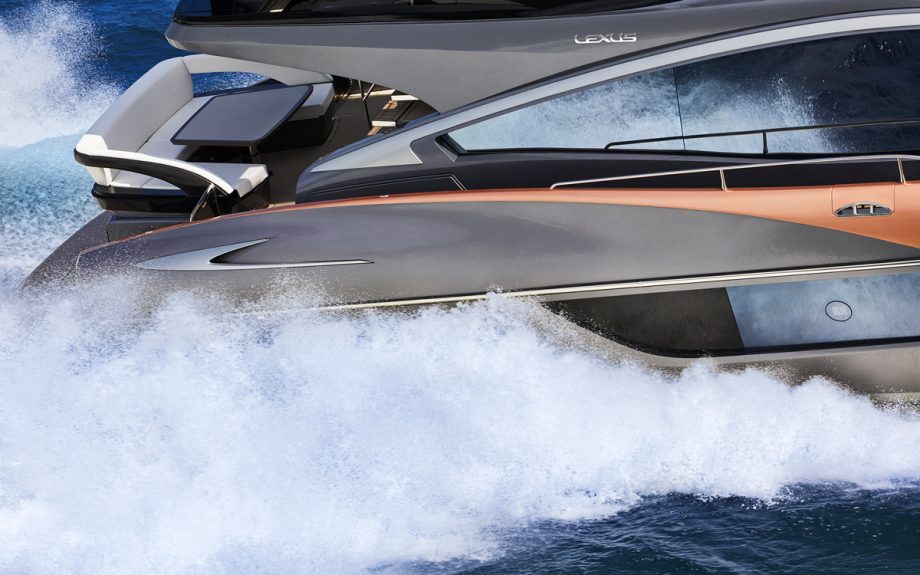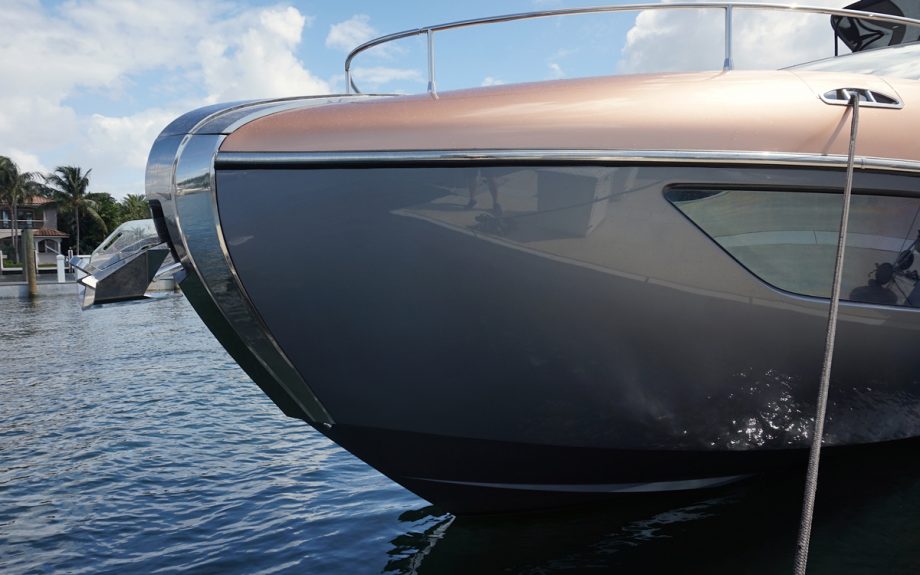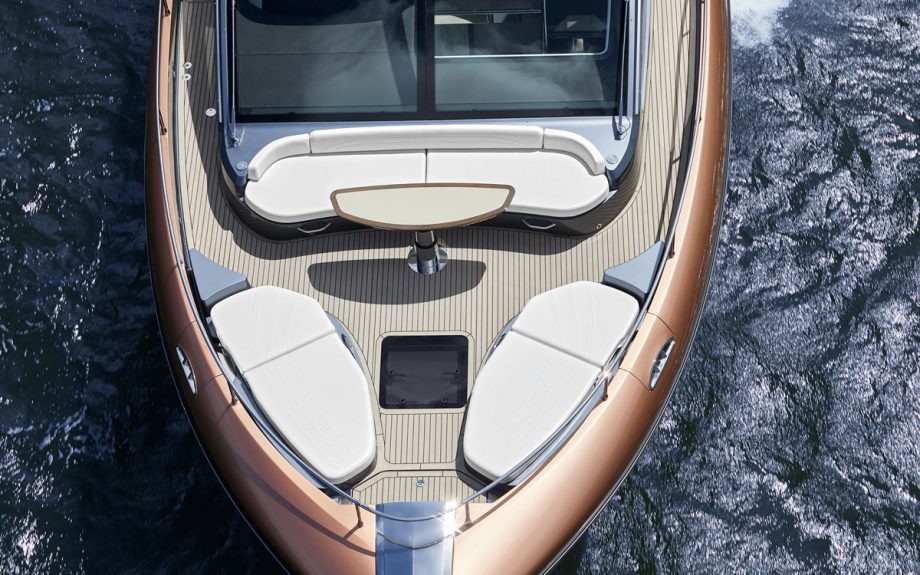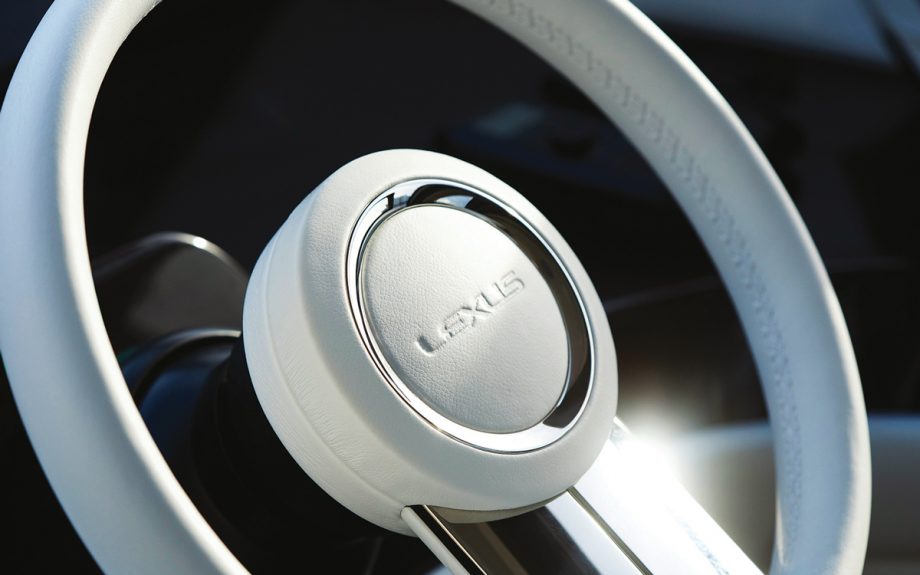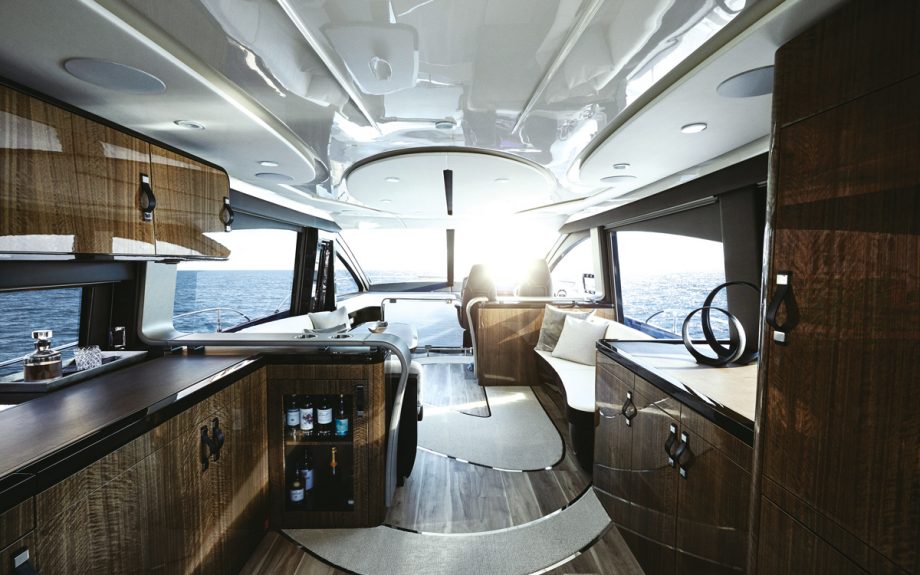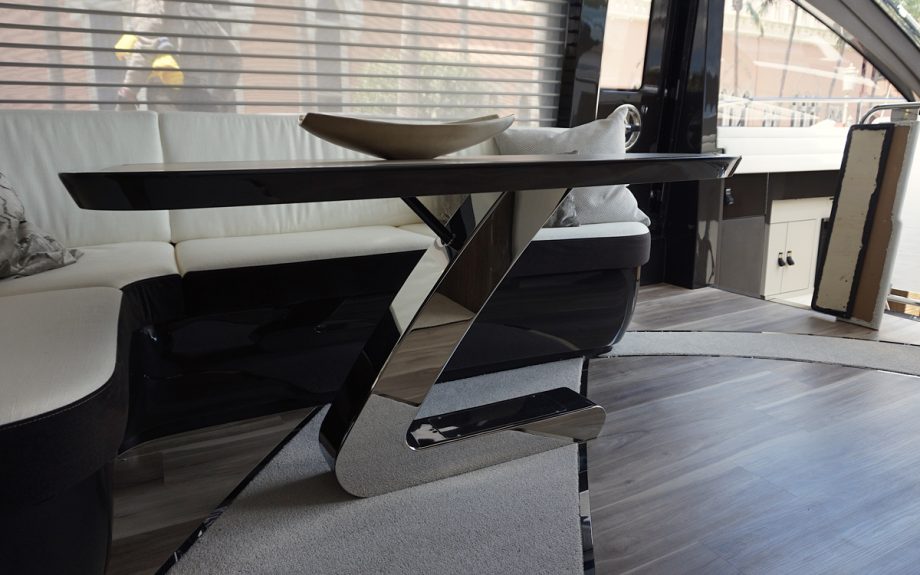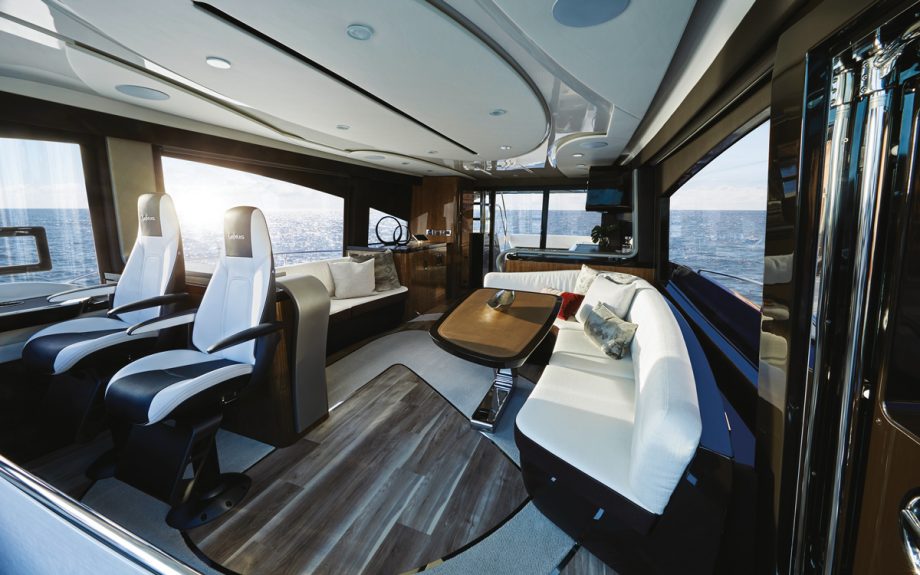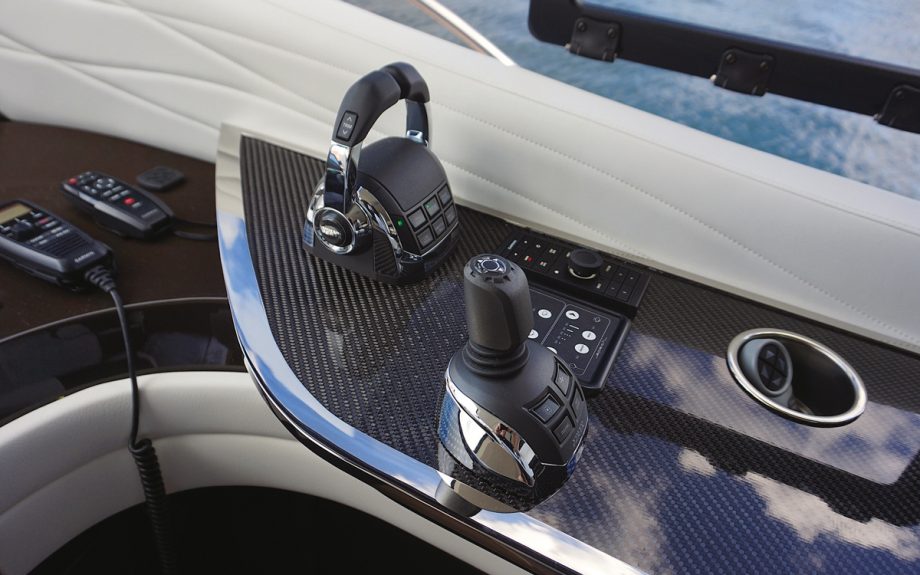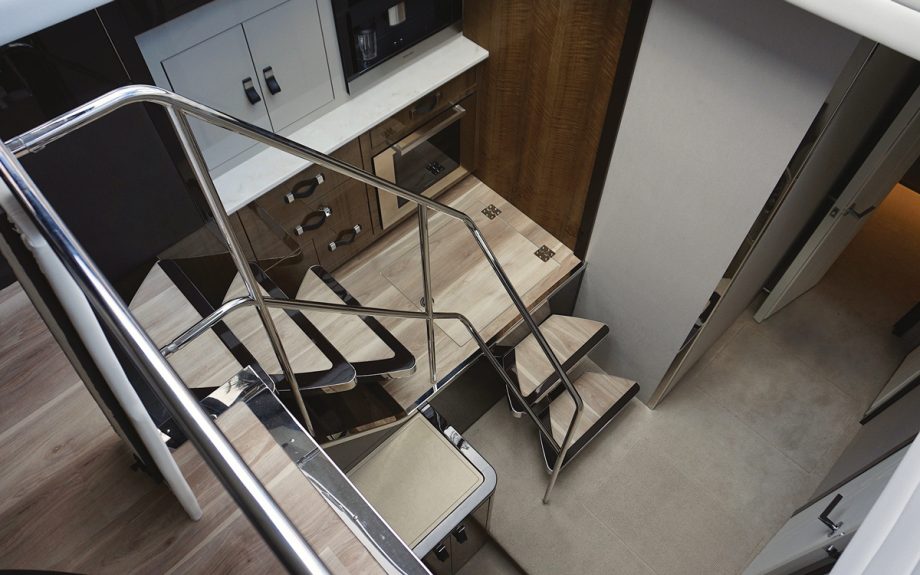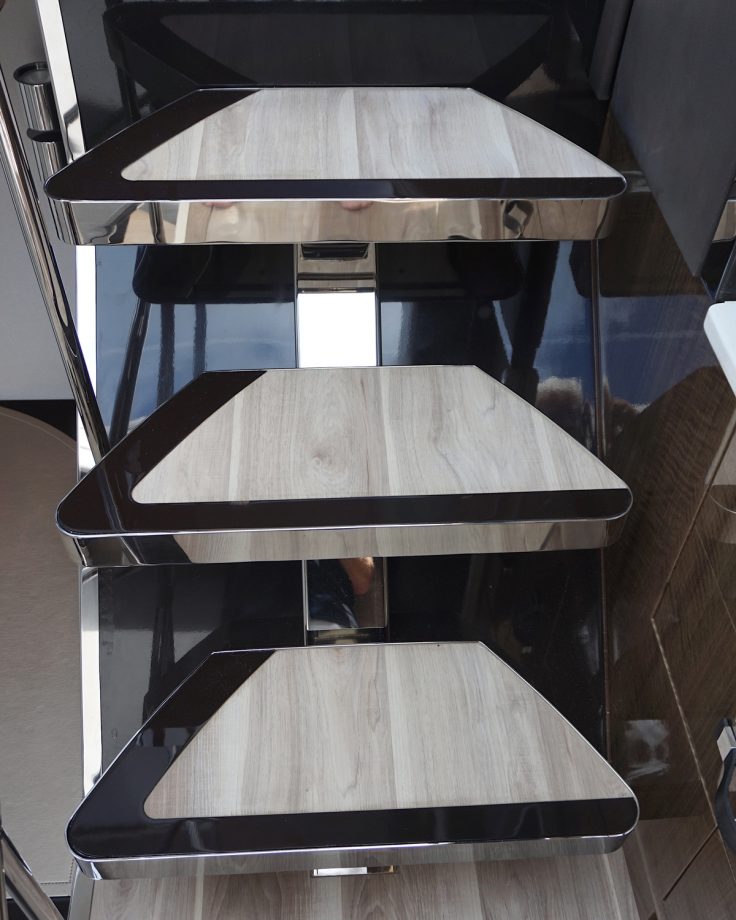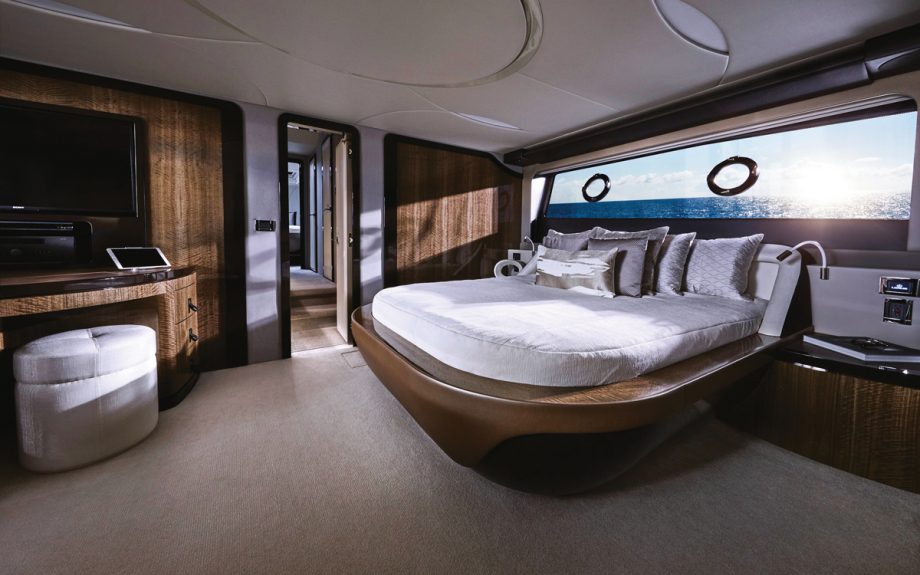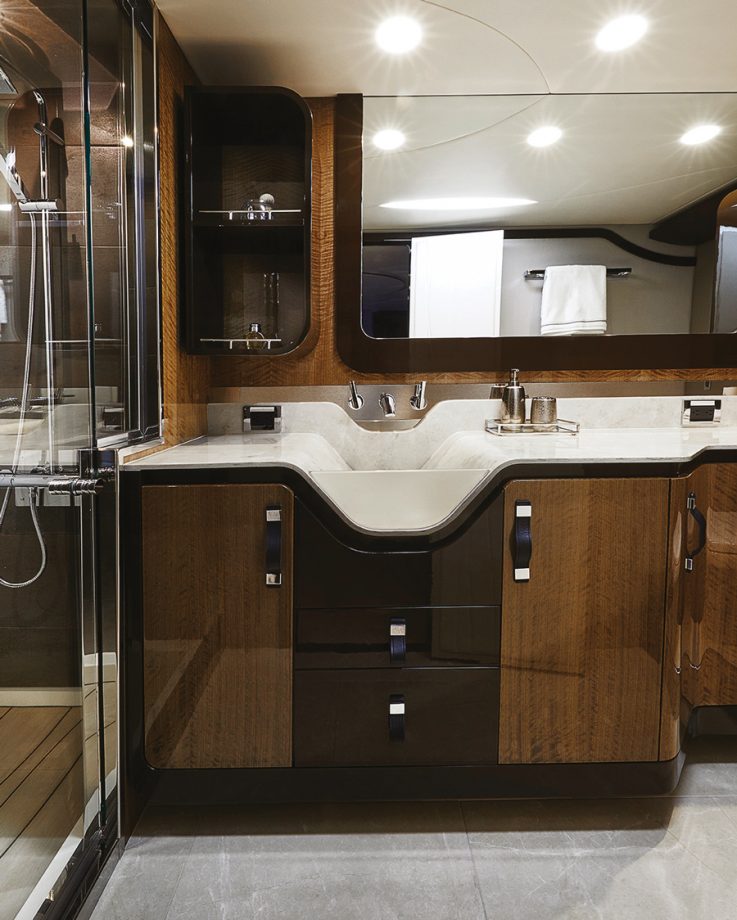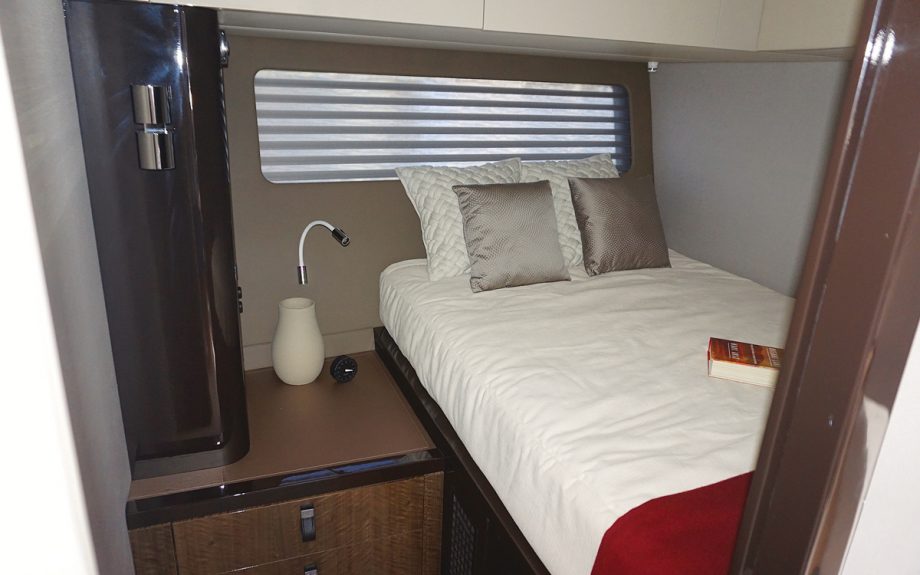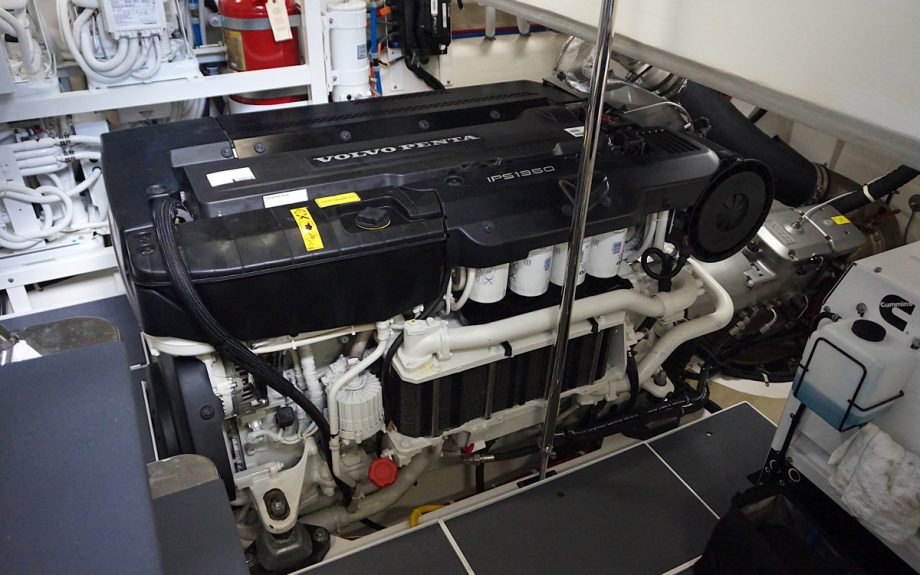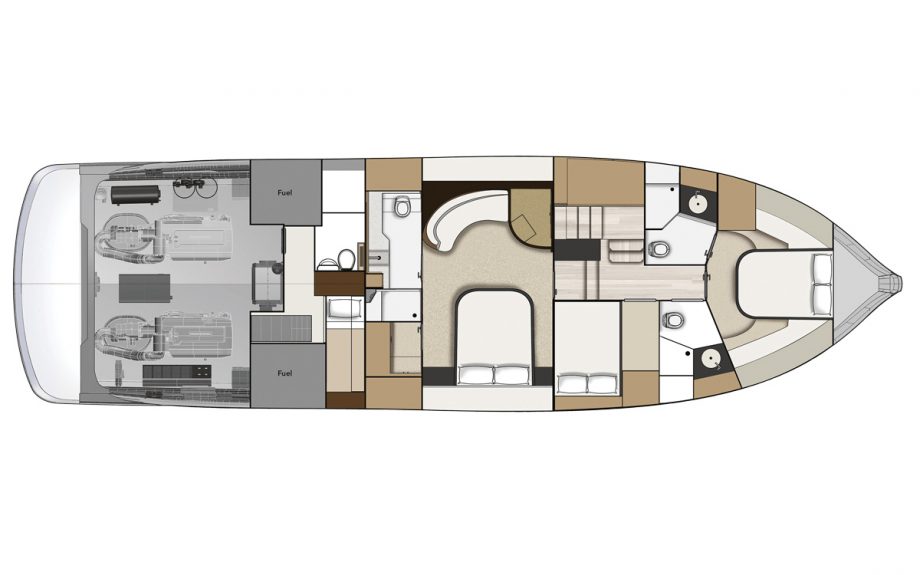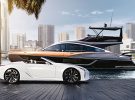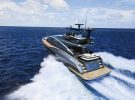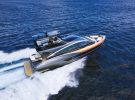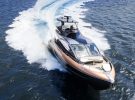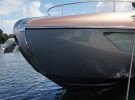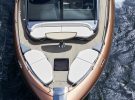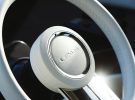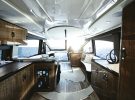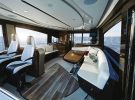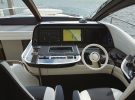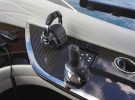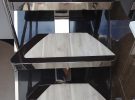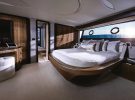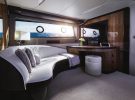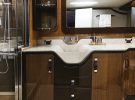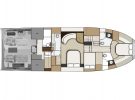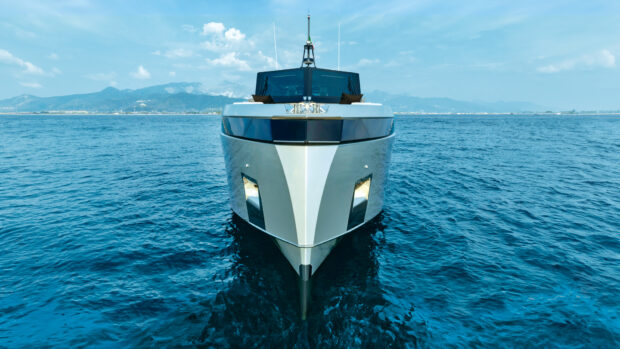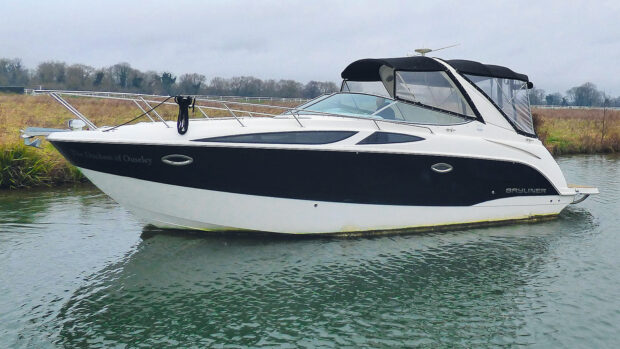It’s not the first time a carmaker has tried its hand at building boats, but with its striking new LY650, Lexus believes it has found the right formula. Howard Walker takes it for a spin...
Hear the words: “Sweetie, I’m thinking about getting a new Lexus” and you’d be forgiven for presuming your better half was pondering the purchase of a shiny new Japanese saloon car or hybrid SUV. Definitely not a 65ft, 2,000hp luxury sportsyacht with a starting price of $3.6 million, or $4.7m fully loaded.
It’s not the first time a luxury car manufacturer has attempted to replace four wheels with twin screws but this offering deserves to be taken more seriously than most. The sleek Lexus LY650 is a proper production flybridge sportsyacht designed and built in close co-operation with the Japanese carmaker by Marquis Yachts in Winsonsin, USA alongside its existing range of Marquis and Carver motorboats.
In UK terms it’s more like Range Rover deciding to design and build a 65ft flybridge in conjunction with Princess rather than Quintessence Yachts building a handful of rarified Aston Martin AM37 superboats.

The LY650 was launched at the 2019 Fort Lauderdale International Boat Show
Why a boat? Right now Lexus is on a mission to become a luxury lifestyle brand – not just a carmaker. It reckons that building a line-up of sleek, sexy motor yachts is a pretty good way of helping achieve that goal. It also says it’s in it for the long haul, and the early signs do look positive.
The LY650 had its first public showing at the Fort Lauderdale International Boat Show last autumn and the first four boats, including the one we tested, had already been sold long before the gates even opened at Lauderdale.
As if that weren’t enough, plans are already afoot for a coupé version of the LY650, sans flybridge, due for launch at this year’s show and after that there’s talk of a 48-footer. Nor is this simply an exercise in badge engineering, Lexus has gone for authenticity over expediency by designing the LY from the ground-up rather than basing it on an existing Marquis design and glueing a few Lexus badges to the topsides.
Article continues below…

VIDEO: Aston Martin AM37 has license to thrill
The car manufacturer’s first ever boat is a remarkable achievement, but has the Aston Martin AM37 got what it takes

GALLERY: Six of the best supercar motorboat crossovers
We look back at some of the best efforts to blend automotive and nautical design, from Bugatti to Skoda
Penned by Marquis’s design chief Josh Delforge, with considerable input from the Lexus design studio in Tokyo, the curvy, head-turning lines are evolved from those of the gorgeous 42ft Lexus Sport Yacht Concept, built by Marquis, that made its debut at the Miami show in 2017. Same distinctive bow, same voluptuous hindquarters, same rich copper-and-steely-grey colour palette. It is unmistakably from that same Lexus stock and very different to Marquis’s own offerings.
While the Sport Yacht Concept was never intended for production, its enthusiastic reception prompted Lexus high-ups, including company president and besotted boater Akio Toyoda, to commission Marquis to build the LY650.
This isn’t the first time Lexus, or at least its parent company Toyota, has dipped a toe in the H2O. Back in 1997 it set up a high-profile marine division to build the Ponam line of boats for the Japanese home market – turning out everything from 26ft sportsfishers to 45ft aluminium cruisers. It’s still the market leader in Japan.

The Lexus detailing is pervasive. Note the L-shaped air intakes built into the topsides
For the LY650’s light and rigid composite hull, Delforge turned to Annapolis-based naval architect, and long-time Marquis partner, Donald Blount, who created a wide-beamed design that focused on delivering a smooth, stable, cushy Lexus-like ride.
As for the interior, Lexus wanted to add a little Italian flair, so Delforge called on Venice-based design powerhouse, Nuvolari-Lenard, which has worked with Marquis in the past. Before the LY650’s public launch, we flew to Boca Raton on Florida’s east coast to get a closer look, and head out into the Atlantic for an exclusive sea trial.
Style council
See the boat out on the water and the lines evince pure drama with almost every surface rounded and organic. The hull shape is defined and dominated by that roll-back axe bow with its broad, stainless steel nose giving the boat a distinctive ‘face’ like the grille of a car.

The LY650 inherits the bold bow design from the 43ft Lexus Sport Yacht concept coupe
Dominating the lines, however, is that huge mirrored-glass windscreen, again shaped to mimic the windscreen of a Lexus sports coupé. It’s accentuated by the dramatic car-like curve of the roofline and sweeping side profile. So as not to detract too much from the drama of that swoopy roofline, the flybridge is small and set well back on the rear overhang – similar to what you’d find on a Sunseeker Sport Yacht or Princess S-series rather than a full fat flybridge yacht.
Delforge tried his best to disguise the height of the flybridge and optional $65,000 (£50,660) carbon-fibre hardtop by having them painted black with a black-tinted windscreen. But the LY still towers over other craft in the marina. It’s partly what happens when you specify full standing headroom in the engineroom, 6ft 8in (2.07m) headroom in the saloon and 6ft 6in (1.98m) in the three en-suite cabins.
As you’d expect, there are plenty of pointers to the Lexus parentage. Everything from the L-for-Lexus-shaped intakes on the rear quarters, to the Lexus name etched in everything from the cleats, to door glass, to the stainless lettering on the transom.

What’s unmistakable, however, is the quality and craftsmanship. Everything from the mirror-like finish of the paint, the precision welding and polishing of the stainless, to the carbon-fibre accents. All Lexus-like, and all created in-house by Marquis.
There’s a reason for all this remarkable attention to detail. During pretty much every stage of the build, Lexus flew in teams of production managers from its plants in Japan to Wisconsin to oversee the build process. Their aim? To instill Lexus levels of craftsmanship and quality in the new LY.
As you’d expect of a yacht with Florida and Med aspirations, there’s no shortage of al fresco seating and sunning areas. The aft deck seat has space for eight around the electric table. Lower it down, throw in a filler cushion and it becomes a huge sunbed. And what’s impressive about the entire seat surround is that it’s made from lightweight carbon-fibre and looks sensational.

Even the foredeck sunloungers are uncommonly stylish
Stroll around the wide side decks to the bow and at the base of the windscreen there’s another spacious sofa and levitating table, plus two integrated, forward-facing sun loungers.
L for leather
Where the Lexus really shines is when you step into the main saloon. Nuvolari-Lenard has done a terrific job of integrating many Lexus touches to remind you of the yacht’s automotive heritage. The main table, for example, is supported by a chromed L-for-Lexus pedestal; the section of carpeting in front of the starboard-side sofa is cut in an ‘L’ shape and edged with polished metal. Then there’s the plexiglass divider at the side of the helm, etched in a delicate pattern that resembles Japanese rice paper.
Don’t, however, plan on cooking up gourmet meals for your guests. The LY’s galley is almost an after-thought, designed more for serving-up cocktails than coq-au-vin. The induction cooktop is a small, two-ring affair and the sink is tiny. You’d be better off ordering a take-away or more probably a table for six.

Lower deck barista zone is perfect for knocking up that first coffee of the morning
Head down the steps to the three cabins – again, the steps are edged with chrome ‘Ls’ – and you go into what Nuvolari-Lenard describes as the atrium. This wide, open, light-filled communal area is home to a barista coffee bar, wine cooler and a hidden washer and dryer. The area feels huge.
Up in the bow is a spacious VIP cabin with a queen-sized bed; the second guest cabin also features a proper double berth rather than bunks; while the midships master is a sprawling, full-beam affair with settee, desk, walk-in closet and huge bathroom. Large hull windows, with opening ports, flood the cabin with light.
It’s here below decks where Nuvolari-Lenard has really strived to integrate the same quality and touches of craftsmanship that Lexus is known for. From the hand-stitched marine-leather padded doors, to the gorgeous eucalyptus veneers, leather draw pulls and top-notch stainless fixtures. The sink in the master cabin, with its wave-like design, is a work of art.

The full beam owner’s suite feels immense. Even the bed is a curvaceous work of art
It’s not just the interior that focuses on painstaking attention to detail. Raise the rear cockpit hatch, step down into the engineroom and your jaw might just drop another few inches. Occupying pride of place, like altars in a place of worship, sit a pair of big Volvo IPS1350s with acres of space around them.
Same goes for the Mitsubishi-built Tohmei gyro-stabiliser and 29kW Onan genset. And there’s hardly a wire or cable-run to be seen, with everything cleanly tucked away out of sight. Just like in the engine bay of a Lexus LS. Also hidden away in the cockpit is a door leading to the optional crew cabin, which could easily be a third guest cabin. Stretching the full beam of the boat, it comes with a single bed, full shower and plenty of storage.
Testing times
Time to try the handling of this new Lexus out in the Atlantic. The forecast is enough to send BBC weather guru Carol Kirkwood into a frenzy. Winds steady at 22mph, gusting to a feisty 28. Frothy, confused seas running at six to eight feet. Forty per cent chance of a downpour. No, not a great day for boating.

Author Howard Walker takes the helm
On flat water with light loading Marquis’s own figures show the big 1,000hp Volvos to be capable of thrusting the LY650 to a top speed of 33.5 knots, accelerating to its planing speed of 13.5 knots in just 12.5 seconds from rest. Don’t need that much power, or cash outlay? Lexus also offers Volvo IPS1050s or 1200s, saving you up to $200,000 (approx £156,000) off the price of the 1350s.
As we ease out of the Boca Raton inlet, helming from high up on the flybridge, we brace for the boisterous Atlantic rollers lunging towards us. The first one, a breaking 6-footer, hits us bang on the quarter sending spray cascading over the fancy, white sun loungers on the bow.
Time to power up. Push forward on the throttles, and the LY650’s flared bow lifts gently and scythes through the heavy swell. Despite the D13s spinning at 2,450rpm on wide-open throttle, there’s only the faintest hum from the heavily-insulated engine room. Very Lexus-like.

The LY650 hit a top speed of 33.2 knots on test
The carbon-reinforced hull does a stellar job of parting the waves, tracking straight and riding smoothly and impressively spray-free through the washing machine-like seas. Much of this is down to the effectiveness of Volvo’s Active Ride system, which can reduce pitch and roll by 60 per cent.
After an hour or so running at an easy 28 knots, I steer hard to starboard to enter Fort Lauderdale’s deep-water ship channel. Despite the confused seas, the big Lexus carves easily into the turn, shrugging off the whitecaps, feeling stable and confident.
Price as reviewed:
£3,660,000.00 (ex. VAT)
Verdict
It’ll be interesting to see whether the Lexus name, and its reputation for quality and reliability, will be enough to woo buyers in this competitive sector of the market. More likely the appeal will come from the LY’s bold design, both inside and out. That and the reputation and backing of Marquis Yachts. Right now there’s no authorised UK distributor for the new Lexus, though Marquis Yachts is quick to say that it will eagerly work through its European contacts to ensure the LY is delivered, serviced and supported in the UK. And no, putting in a call to your local Lexus dealer probably wouldn’t work.
Details
Price from : £2,800,000 (ex. VAT)
LOA: 65ft 5in (19.94m)
Beam: 18ft 10in (5.76m)
Draft : 5ft 6in (1.7m)
Displacement (dry) : 33.3 tonnes (73,414lbs)
Fuel capacity : 4,012 litres (882 gal)
Water capacity : 851 litres (187 gal)
Test engines : Twin 1,000hp Volvo Penta IPS 1350
Top speed on test : 33.2 knots
Cruising speed : 20 knots
Fuel consumption at 20 knots : 200lph
Range at 20 knots : 377nm







